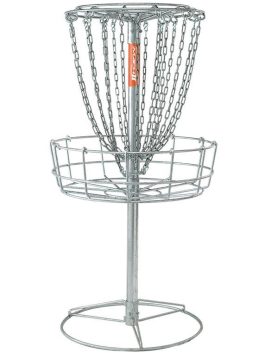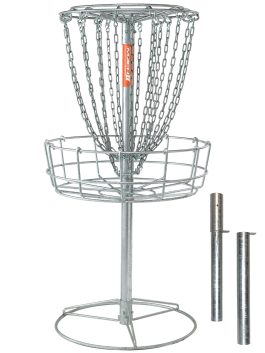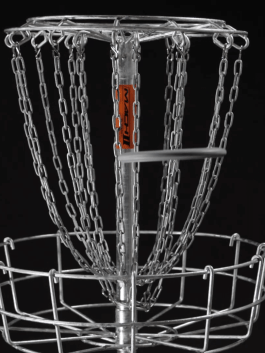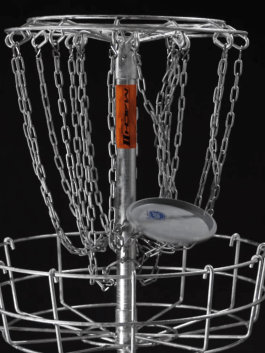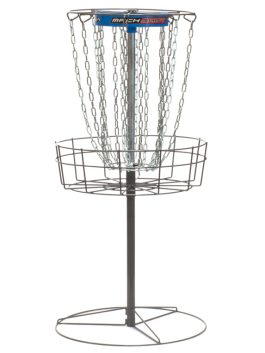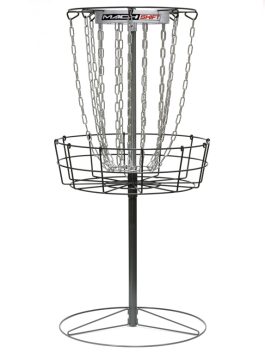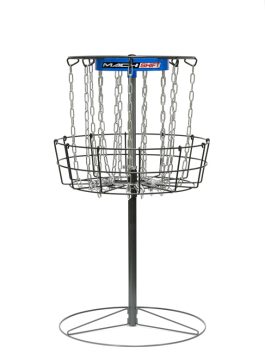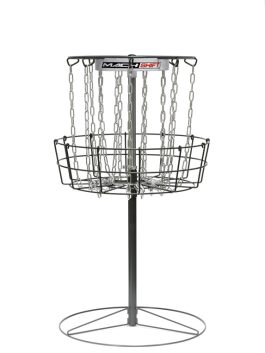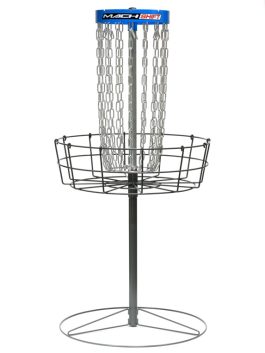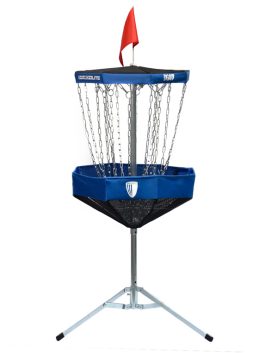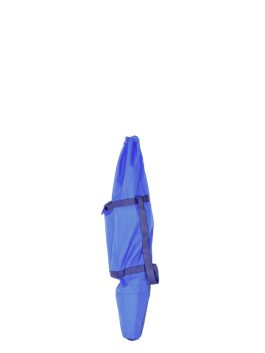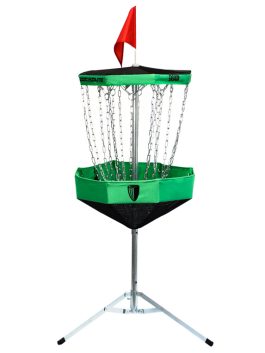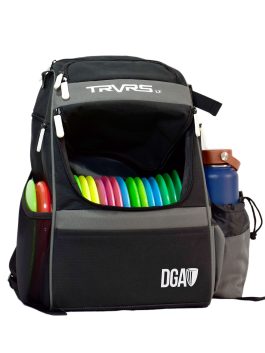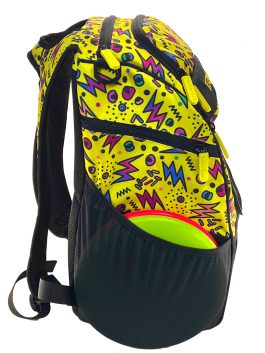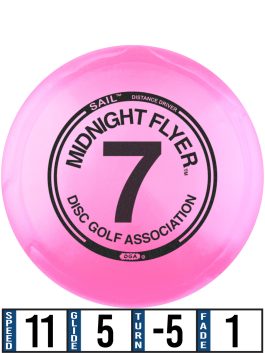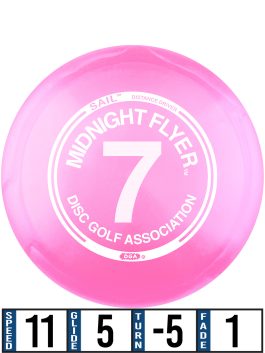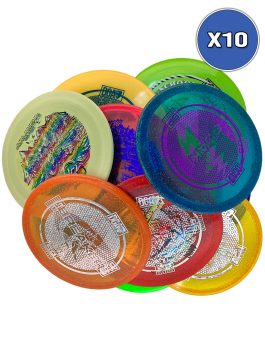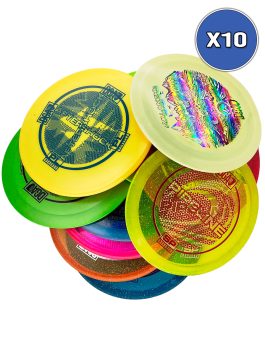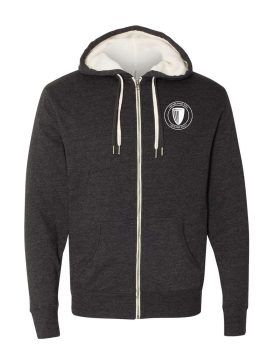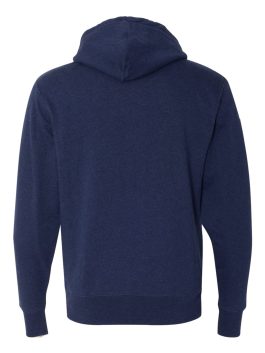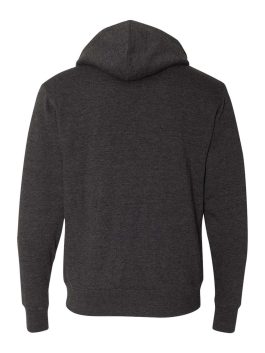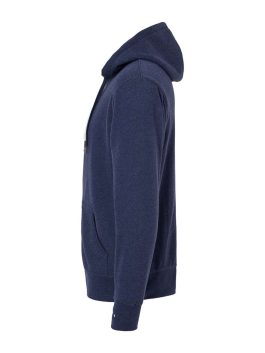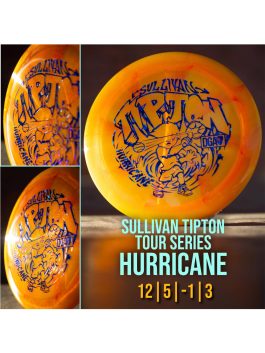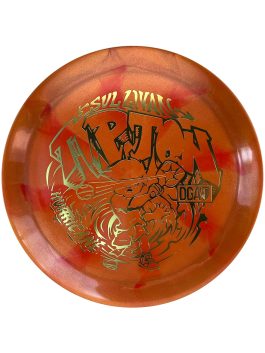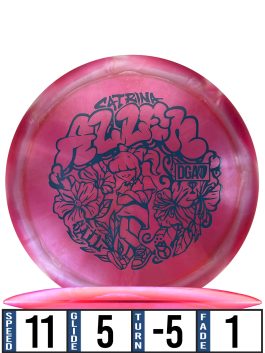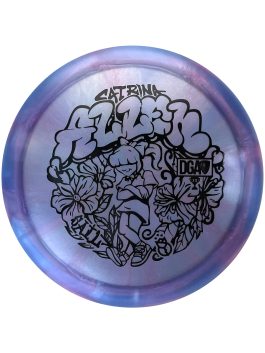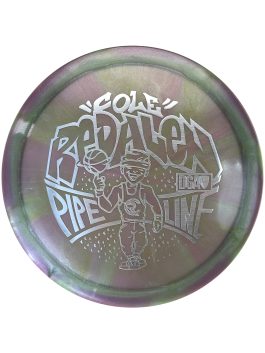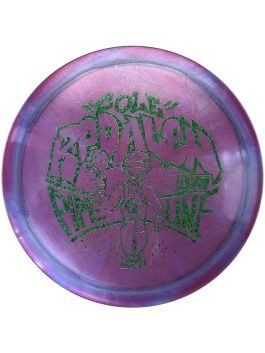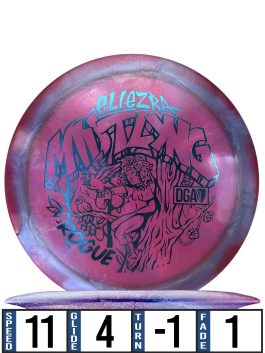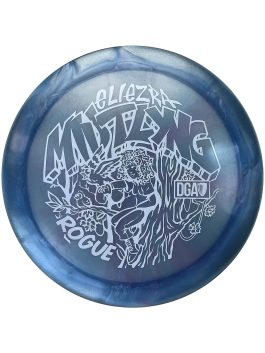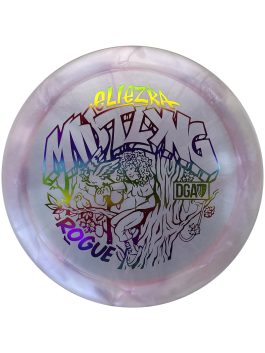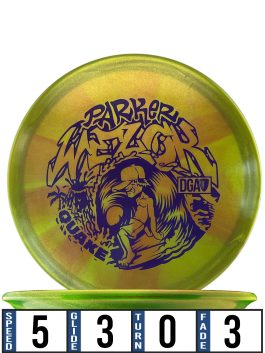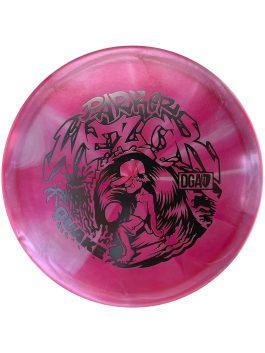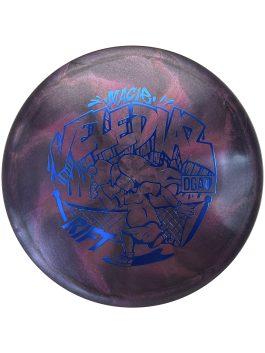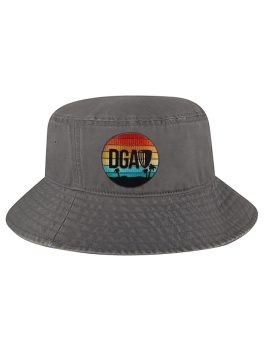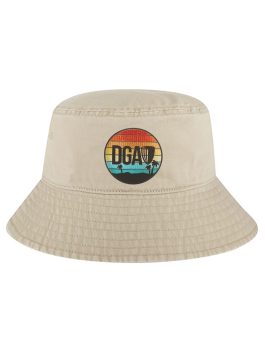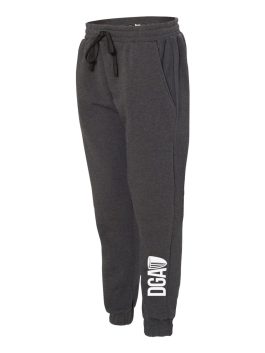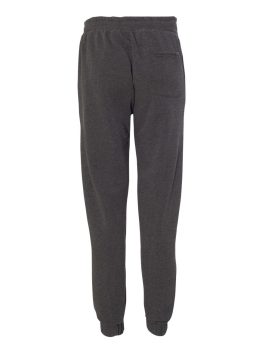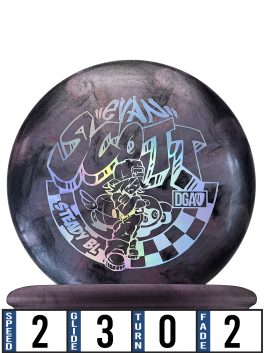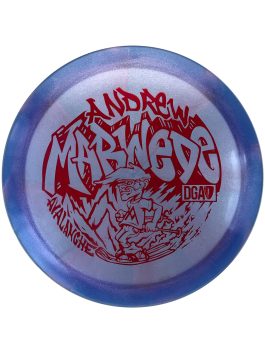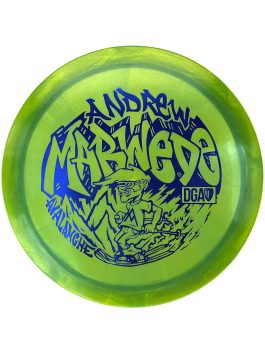One of The Fastest Growing Sports
Today’s Disc Golf
The sport of disc golf evolved as an offshoot of the many games spawned by the Frisbee craze. The game started with people using Frisbees and aiming at targets made up of trees, trash cans, light poles, pipes, and whatever else was handy.
one of the best lifetime fitness sports
What is Disc Golf
Disc golf is similar to traditional golf, however, instead of using golf clubs and balls aiming for a hole, disc golf players use disc golf discs and aim for a disc golf basket which is a pole extending up from the ground with chains and a basket where the disc lands. The object of the game is to complete each hole in the fewest number of throws, starting from a tee area and finishing with the disc coming to rest in the basket. Generally, a course is made up of 9 or 18 holes. Players start at hole one and complete the course in order, playing through to the last hole. The player with the lowest total cumulative throws wins. Disc golf differs from traditional golf in important ways. Disc golf courses can use a wide variety of terrain. Often times, land not suitable for other park activities or development is the perfect terrain for a disc golf course. Disc golf is one of the best lifetime fitness sports. It is easy to learn, a healthy activity, and accessible to people of all ages and fitness levels. If you can throw a Frisbee® and you like to have fun, you can play disc golf. Today there are over 7,500 disc golf courses in the United States and millions of people who have played the game. Since 1976, there have been over 100,000 members of the Professional Disc Golf Association and players can compete in more than 3,500 sanctioned tournaments annually*. The positive experience with disc golf and the growing demand for more courses have led to the expansion of the sport all over the country, from small towns to urban areas.
Similar to Traditional Golf
How to Play
Tee off order on the first tee will be by mutual arrangement or by flipping discs. The printed side is heads and the odd man should be first. Tee off order on all subsequent holes is determined by the score on the previous hole. The player with the lowest score tees off first.
A mini marker disc is used to mark the lie for each throw. A mini marker disc is a small disc, not used in play, that complies with PDGA Technical Standards for mini marker discs. The thrown disc is always left on the lie, (where it came to rest,) until the marker disc is placed on the ground directly in front of and in line with the basket, touching the disc. The thrown disc is then picked up.
Proper foot placement when throwing will require some practice. The foot that you put your weight on when you throw, i.e., the “plant” foot, must be as close as is reasonable to the front line of the tee or to the marker disc: in no case ahead of the line or disc, or more than 1 foot behind the line, or disc. The other foot can be any place you choose as long as it is no closer to the hole than the rear of the marker disc.
A follow through (stepping past marker disc after throwing) is allowed on any throw except when putting (any throw where the rear of the marker disc is within 10 meters of the hole). Falling forward to keep your balance after a putt is not allowed. This infraction is called a falling putt.
If the disc is stuck in a tree or a bush more than 2 meters above the ground, the marker disc is placed exactly beneath it and it is carefully removed from the tree. You have also just added one throw to your score. This is called a penalty throw. You may now proceed; however, take extreme care not to damage the tree or bush, or reshape them in any way to improve your throwing conditions. Some courses have “out of bounds” areas designed to keep players out of a certain area or for the general safety of the players. Observe the boundaries carefully and try to stay out. If your disc is “out-of-bounds”, i.e., you can see “out-of-bounds” area between the edge of your disc and the “inbounds” line, place your marker disc up to 1 meter on the “inbounds” side of the line at the place where your disc went “out-of-bounds” and give yourself a one throw penalty. Again, please be careful of natural vegetation.
Water hazards are to be avoided because your disc will sink! If, however, you have been so unfortunate as to land in the water, play it like you do the “out-of-bounds” throw, and don’t forget to take a one throw penalty. If the disc is touching any land above the water, it is “inbounds”. Standing water or mud on the course that is caused by sprinklers or rain is not considered “out-of-bounds” and the disc may be relocated to a dryer area no closer to the hole with no penalty.
A “mandatory” is sometimes used to keep players out of alternate-use areas or to make a particular hole more difficult. It is normally designated as such on the tee sign. The arrow indicates the side and direction the disc must pass. If your disc passes to the wrong side of the mandatory, you would either re-throw from the previous lie or throw from a designated drop zone area if marked and apply a one throw penalty.
Always leave the course better than you found it. Disc golfers tend to follow the “pack in, pack out” mentality to ensure no trash is left on the course.
Disc Golf Gear
-
- Select options
- Disc Golf Basket, Permanent Outdoor Baskets, Practice | Training Baskets
Mach 2 Portable Disc Golf Basket
- $300.00 – $335.00
- Rated 4.83 out of 5
-
- Select options
- Disc Golf Basket, Practice | Training Baskets
Mach Shift Basket | 3-in-1 Disc Golf Basket
- $149.99
- Rated 4.75 out of 5
-
- Select options
- Disc Golf Basket, Practice | Training Baskets
Mach Lite Portable Disc Golf Basket
- $144.99
- Rated 4.79 out of 5
-
- Select options
- Disc Golf Bags, Shop Accessories
TRVRS LT Disc Golf Bag
- $54.99 – $59.99
- Rated 4.77 out of 5
-
- Select options
- Shop All DGA Discs, Disc Golf Discs, Distance Drivers, Drivers, Limited Edition Discs, Sail Distance Driver
“Midnight Flyer” Sail #7
- $21.99
- Rated 4.50 out of 5
-
- Add to cart
- Shop All DGA Discs, Disc Golf Discs, Disc Sets, Misprint
Misprint Assorted 10-Pack Premium Plastic
- $99.99
- Rated 4.92 out of 5
-
- Select options
- Apparel, Hoodies
Sherpa Hoodie
- $59.99 – $62.99
- Rated 5.00 out of 5
-
- Select options
- Apparel, Hats
Sunset Bucket Hat
- $19.99
- Rated 0 out of 5
-
- Select options
- Apparel
DGA Fleece Jogger
- $40.00
- Rated 4.00 out of 5
DGA Disctorials
disc golf instructional Videos
Driving Basics
Find a driver right for you here >>
Approach Shots
Find a putt and approach disc right for you here >>
putting
Find a putt and approach disc right for you here >>
Hyzer and Anhyzer shots
Find a midrange disc right for you here >>
How to Throw
The most common problem when throwing a disc is that most new players have to unlearn bad habits. This short instruction is aimed in that direction.
The Proper Grip
Everybody has their most comfortable grip, here are some guidelines to find yours.
The basic throw is backhand and the proper grip is the key. Almost the entire grip is between the thumb and index finger. The other fingers change the angle of release or help add more grip and spin. Remember the harder you throw the harder your pinch. Relax the rest of your body and throw. Don’t try to establish a record until your throw and follow through are relaxed and consistent.
Foot Placement
A good stable stance sets up your throw and is the foundation of your shot.
The stance for a drive is shoulders and feet in line with the line representing the line of throw you desire. The distance throw is always on this line. As you get closer to the hole and are making an approach throw, you can loosen up your foot placement to as much as 45 degrees for a putt.
The backswing is like winding a spring. Plant your feet on the line. Sit down two or three inches to loosen your hips then bring the disc back as far as you can reach. The throw is an unwinding of the spring, first the ankles, knees, hips, stomach, shoulders and lastly your arm. If you feel like you have snapped a whip, you are getting the idea.
Hyzer and Anhyzer
Right-handed backhand throws will naturally curve to the left and are called a “hyzer” (overstable). Right-handed throws where the disc curves to the right are called an “anhyzer” (understable).
To throw a left curve, tilt the disc to the left and a right curve tilt disc to the right… Experiment!
Backhand Throw
Straight arm or bent elbow?
There are many schools of thought as to bending the elbow during the backswing. The fully extended arm is the longest fulcrum we have available to throw with. Why take a chance that it may not be fully extended during the throw? Start with it straight and end with it straight. This will ensure maximum hand velocity and you won’t have to worry about timing.
Stand with your shoulders and feet in line with the direction of flight. Start the backswing with your wrist straight and the side of the disc furthest away from you aimed at the spot on the ground about 20′ away from you. Your right elbow should be straight and rigid. Complete your backswing at a point as far back as you can stretch, like winding a spring.
Tee Off and Fly Freely
Focus on your release, wrist, and follow through.
Bend your knees, squat down 2″ and start your throw (unwind) from your ankles, knees, hips, stomach, shoulders, arm, and last, but most important, your wrist. Then follow through, let your arm continue to swing until it pulls your shoulders around with it. If the disc wants to turn over as it leaves your hand, you may have allowed the edge furthest from you to come up, or your grip between your thumb and index finger needs to be increased.
Disc Golf Equipment
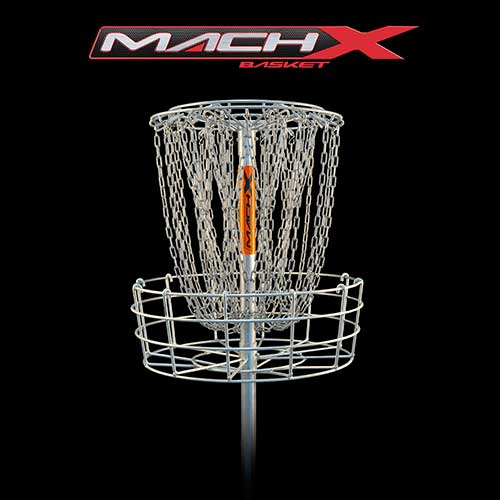
Disc Golf Baskets
Disc golf baskets are the most important components of a disc golf course. The model you choose to install on your course depends on your course design objectives.
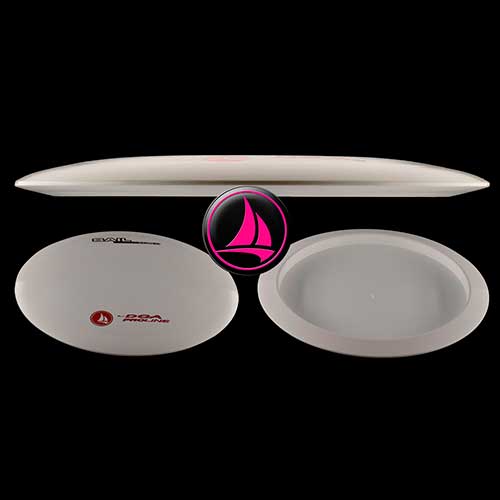
Disc Golf Discs
Today’s disc golf players use many different discs, depending on the course layout. There are drivers, midrange, and putt and approach discs.

